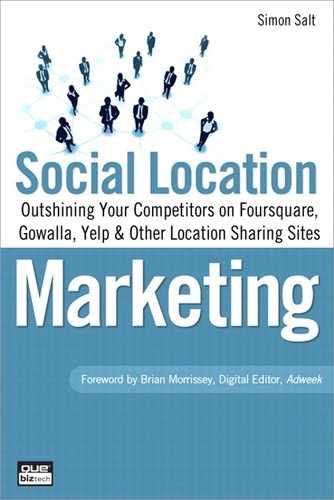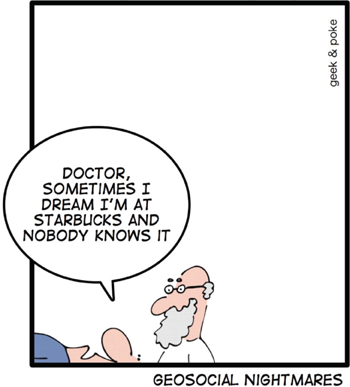Introduction
A vision of the future:
Footsteps ring out on an empty street; a lone individual stalks the evening in search of a distraction. Unbidden, his hand slides into his pocket. His fingers caress the smooth edges of the weapon he is carrying. The engineers did a good job this time. Small but powerful was what he needed, small and powerful was what they delivered. Something that would pass unobtrusively in daily life. Something that would pass unnoticed and yet be very noticeable when used, that would separate him from the crowd as a connoisseur, as someone who knew what he is doing.
The sounds of music, voices, people enjoying themselves flood from doorways as the searcher passes them. Will they still be as happy if he chooses this location as his destination? Will this place meet his needs? He has an idea of what he is looking for, but as yet his prey is unclear. There is a certain thrill in this hunt, knowing as he does that he is armed with the device he is carrying; he has already won this battle in his mind.
He slows as he approaches each opportunity, pausing slightly to try to decide from the sounds emanating from within whether this is the location he is seeking. Door staff eye the individual, assessing him, not knowing that he has the power in his hands to decide their fate. Half beckoning, half rejecting him as he slows outside each, allowing the lights, music, and conversation to wash over him. These sensory indicators are mere distractions. They no longer factor into his decision; he is able to reject them as such, given the power from the device he is carrying they no longer concern him.
Searching is time consuming, but finding the right location is an essential part of his plan; it must have all the right elements and in the right mix. He is very selective, not just anywhere will do. He is confident that he will find just what he is looking for. He knows that both he and his device will find their target. After all, that is why he bought it, because with it he never need be lured to the wrong target again.
He arrives at a venue that seems, on the surface, to meet his needs: it’s the right location, and the people inside seem to fit his image of what they would be like. He reaches again into his pocket, his hand finding the device. The door staff stiffens at the action. They have seen this before; they are wary, they don’t want to react too quickly, but react they must.
He is armed, and fearless in his use of the weapon he carries, he will be merciless in its use. It gives him that power, and that power gives him the right to choose. Slowly withdrawing it, revealing the sleek black casing, he levels it at the front of the building. Taking careful aim, he zeros in on the sign above the door.
The screen on the weapon he has produced, only a few square inches in size, provides him with all the information he needs. Instantly he can see who he knows that is already inside, read their reviews and the reviews of critics, get the menu, the drinks list, and decide in a moment if this is where he will spend his hard-earned money. He is armed with a Smartphone, the weapon of the information age.
No, you are not reading a science-fiction novel, nor a wild hypothesis on what might be. Everything described in the preceding scenario is already available and already being used in its individual elements by consumers. Foursquare, Gowalla, Yelp, Layar, Google Goggles, and other tools are already empowering consumers to make more informed buying choices on a location-by-location basis. Mobile information-empowered consumers can make informed decisions as quickly as they can walk across the street. They can leave your location behind because of a lack of information and instead choose your competitor because their friends and trusted strangers have already been there and left enough data behind to enable consumers to make an informed buying decision.
This is the reality facing marketers in the modern age. You no longer get to control the message, the content, or the information that buyers see about your product, service, or location. This applies equally to the family owned corner store as it does to the multinational chain. Each location is seen as a separate and disparate entity by the consumer. The information being shared is not just about your brand but about the individual experience encountered by a users’ network of trusted informants. People buying from people has always been the reality, especially in the small business space. In the information-powered age, it is even more so, because the people that users are buying from might not be your people but their own network, based on the information that network provides them. Long before they see your messaging they have received the messaging about your organization from their network and have already started to form an opinion as to whether you are a fit for their needs.
Influencing the buyer is not enough. Now you must influence the potential buyer’s network; the organization must expand its vision beyond simple messaging to potential customers or users to be inclusive of those who are already users or customers and persuade them to make recommendations, to become advocates for your organization. The organization must be prepared to provide incentives and rewards for these advocates, whether they are active or passive advocates and be able to differentiate between the two.
Social location marketing is bringing businesses closer to their customers and potential customers than any other marketing tool in recent history. It is more powerful than any other form of social media and has higher rewards for a lower cost than any other form of digital marketing. Ignoring it will bring equally higher risks. Social location sharing is happening to your product, service, venue, and location whether you are active or not. This is not something you have the choice to opt in or out of. Unlike Facebook, Twitter, or LinkedIn, you don’t get to decide your point of entry, no launch dates, no collateral marketing around it. Users have already decided whether you should join in.
By reading this book, you are taking the first steps in ensuring that your organization is a part of that new future and not losing customers to more information enabled environments. This future has already arrived and is accelerating in its empowerment of consumers daily as new applications and tools are launched to the market, all of which are free to use.
What’s in This Book
This book is designed to be a how to book for marketers interested incorporating social location sharing platforms such as Foursquare and Gowalla into their marketing mix. In addition it includes real world case studies of companies that have already achieved success by doing so.
The book will take you through the following stages:
Why Should I Bother?—Why people want to share their location with others and what is in it for them when they do. What is in it for businesses both large and small.
Square Pegs and Round Holes: Where Does This All Fit?—Where does social location marketing fit into the broader scope of social media and how does it benefit the organization that is using it.
Games People Play—Understanding the motivations of users through game theory. Why game play fits with sharers and how to design marketing campaigns that take advantage of this.
Introduction to Location Sharing Tools—What are the platforms, what do they do, who uses them and which one should you use.
Industries Making it Work—Which industries are already making social location marketing an active part of their marketing plans and what successes are they experiencing in doing so.
Get Set, Go—Walk through setting up accounts on the major platforms, tips and tricks for getting the most out of them as a user and as a marketer.
Marketing to Social Location Sharers—How different venues/locations can utilize social location sharing platforms as part of their marketing strategy, including single venue organizations, multiple venue organizations, organizations without a venue and business to business organizations.
We’re Here All Week—Event marketing with social location sharing platforms.
Socially Speaking: The Social Business—Integrating all the pieces into one plan. Incorporating customer service into the plan and how it impacts social location marketing.
Plan, Plan, Plan—What does a social business really look like, how to align an existing business and how to create one from scratch.

